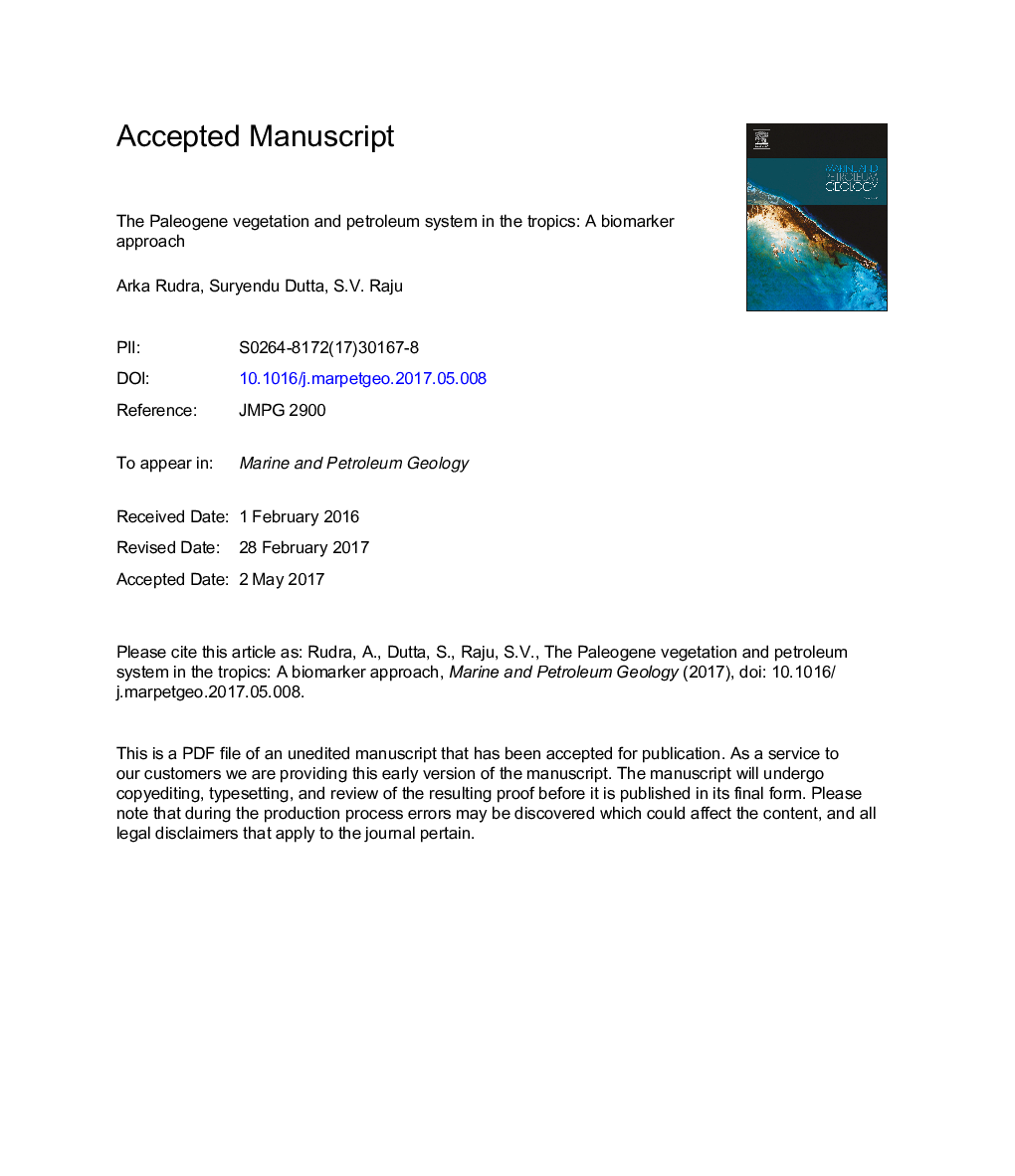| کد مقاله | کد نشریه | سال انتشار | مقاله انگلیسی | نسخه تمام متن |
|---|---|---|---|---|
| 5781963 | 1637141 | 2017 | 41 صفحه PDF | دانلود رایگان |
عنوان انگلیسی مقاله ISI
The Paleogene vegetation and petroleum system in the tropics: A biomarker approach
ترجمه فارسی عنوان
پوشش گیاهی پالئوژن و سیستم نفت در مناطق گرمسیری: رویکرد بیومارکر
دانلود مقاله + سفارش ترجمه
دانلود مقاله ISI انگلیسی
رایگان برای ایرانیان
کلمات کلیدی
حوضه آسام، کنزوئیک، هیدروکربن ها، فسیل های مولکولی، عناصر جنگلی
موضوعات مرتبط
مهندسی و علوم پایه
علوم زمین و سیارات
زمین شناسی اقتصادی
چکیده انگلیسی
The present study investigates the biomarker signatures of sediments and crude oils to infer the paleovegetation from the two petroleum systems of Assam Basin, eastern India. They are classified as the Paleocene-middle Eocene and the middle Eocene-Oligocene petroleum systems. The sediments are oil and gas prone with an early catagenetic stage of thermal evolution. Here we report tricyclic diterpanes such as rimuane, pimarane, rosane and isopimarane along with tetracyclic diterpanes: ent-beyerane, phyllocladane, kaurane from Paleocene-Eocene coal-bearing sediments and crude oils. These diterpane biomarkers attest dominant contribution from conifers, possibly from Podocarpaceae and Araucariaceae. However, diterpanes are not detected in Oligocene sediments and oils. Crude oils from both Paleocene-Eocene and Oligocene reservoirs and organic rich sediments contain angiosperm biomarkers such oleanane and related triterpanes along with bicadinane, a biomarker specific for the Dipterocarpaceae family of angiosperms. The equatorial position of India during early Paleogene along with the presence of angiosperm signatures including Dipterocarpaceae and gymnosperms reflect the emergence of tropical rainforest elements in eastern India. Absence of diterpenoids in Oligocene samples and difference in angiosperm parameters from Paleocene-Eocene samples suggests a change in source vegetation and organofacies.
ناشر
Database: Elsevier - ScienceDirect (ساینس دایرکت)
Journal: Marine and Petroleum Geology - Volume 86, September 2017, Pages 38-51
Journal: Marine and Petroleum Geology - Volume 86, September 2017, Pages 38-51
نویسندگان
Arka Rudra, Suryendu Dutta, S.V. Raju,
